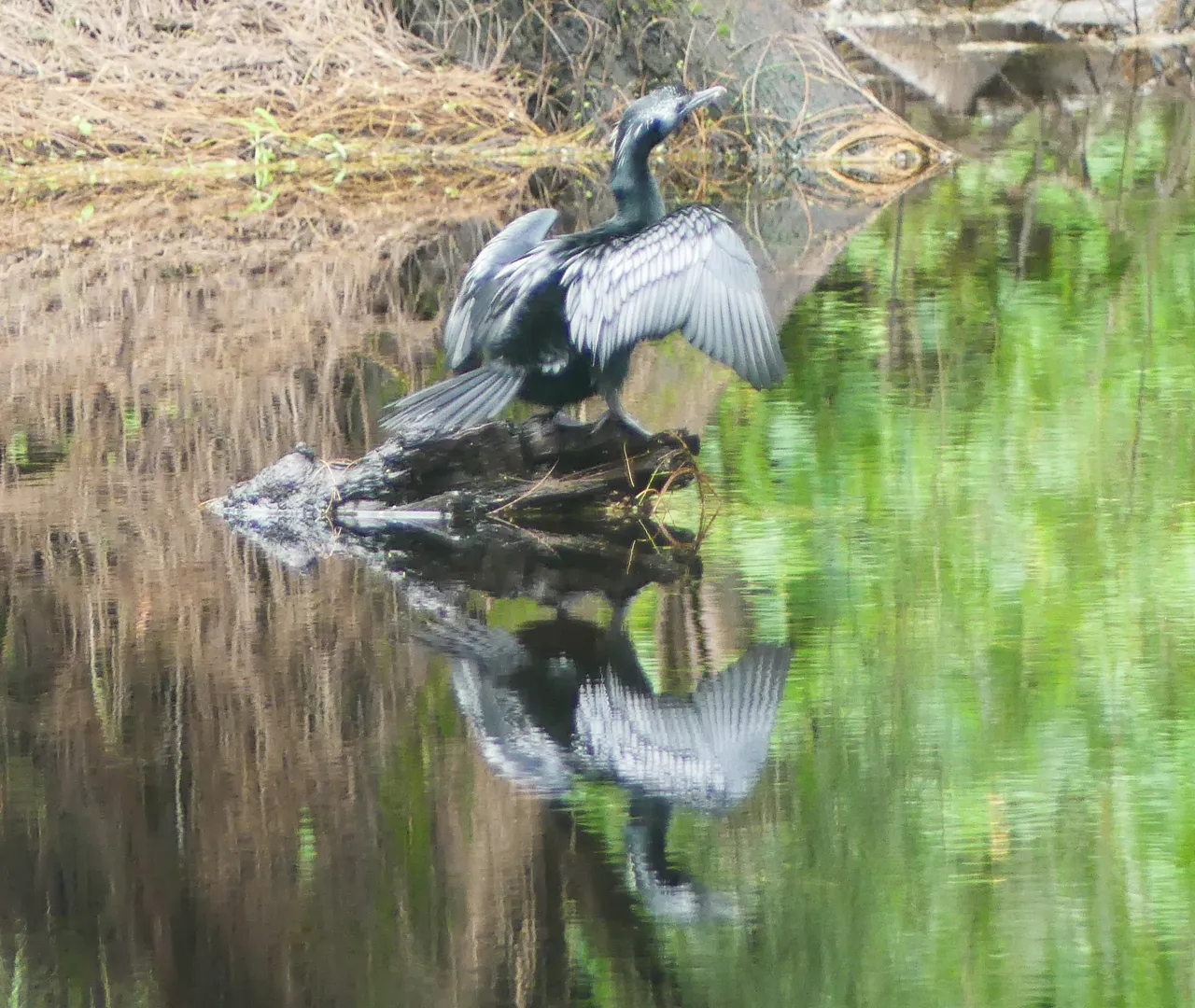for this entry focusing on wings i am showing two birds, the indian or oriental darter (Anhinga melanogaster) and a little comorant. this entry photo is from keoladeo national park in rajasthan. here the much larger bird with spread wings is the darter with a wingspan of about 1.2 meters. it spreads them to dry them. many water birds have wing feathers which trap air bubbles which help them float and repel water but not darters and cormorants. they are divers and to be able to dive deep they have to allow their wings to become waterlogged. they impale their prey with their long sharp bill. after the underwater hunt they can often be seen with wings spread in the sun to dry.
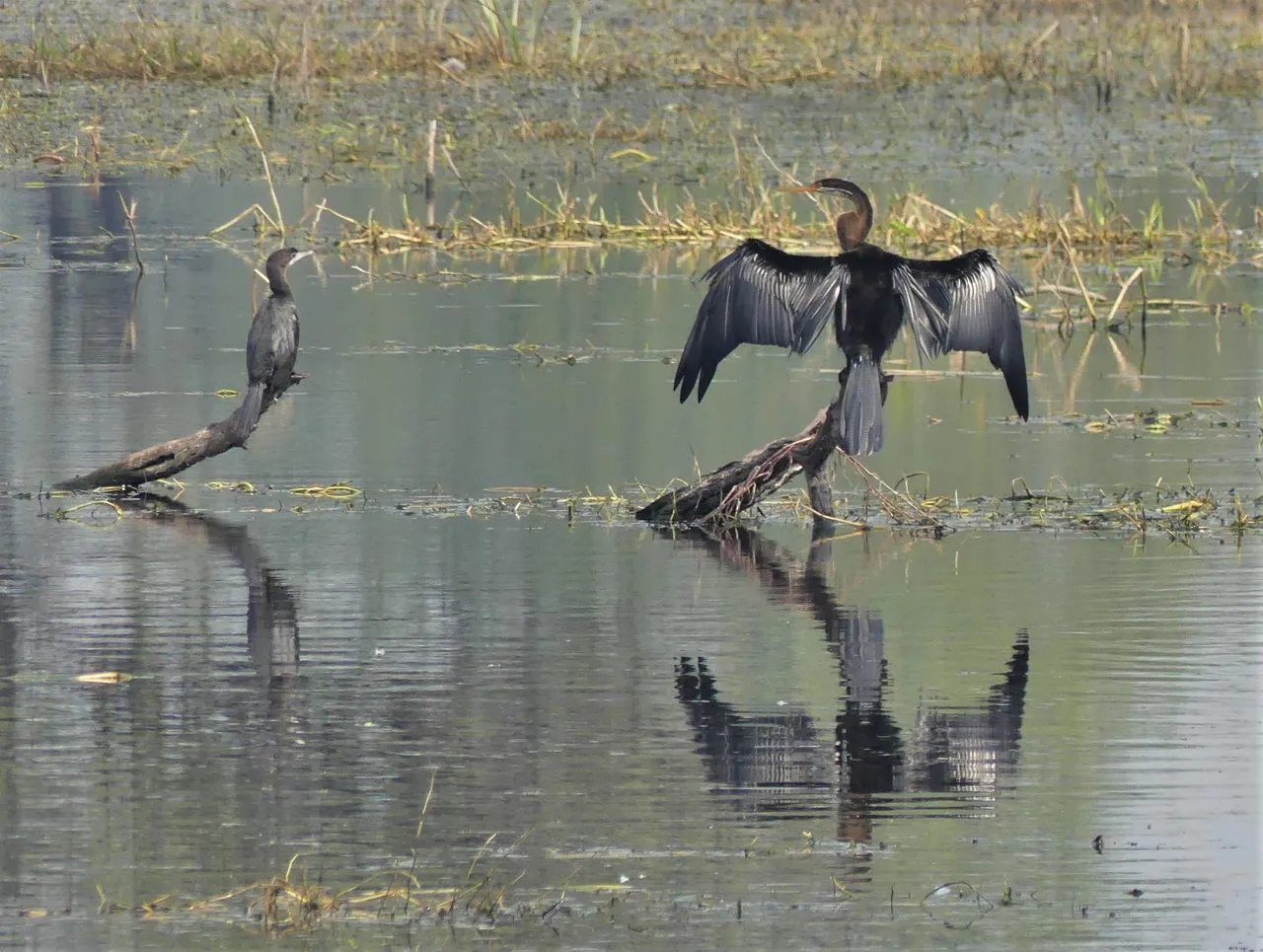
here is another darter with wings closed but in this photo the long flexible neck is fully visible. they may not be the most beautiful but they are impressive nonetheless
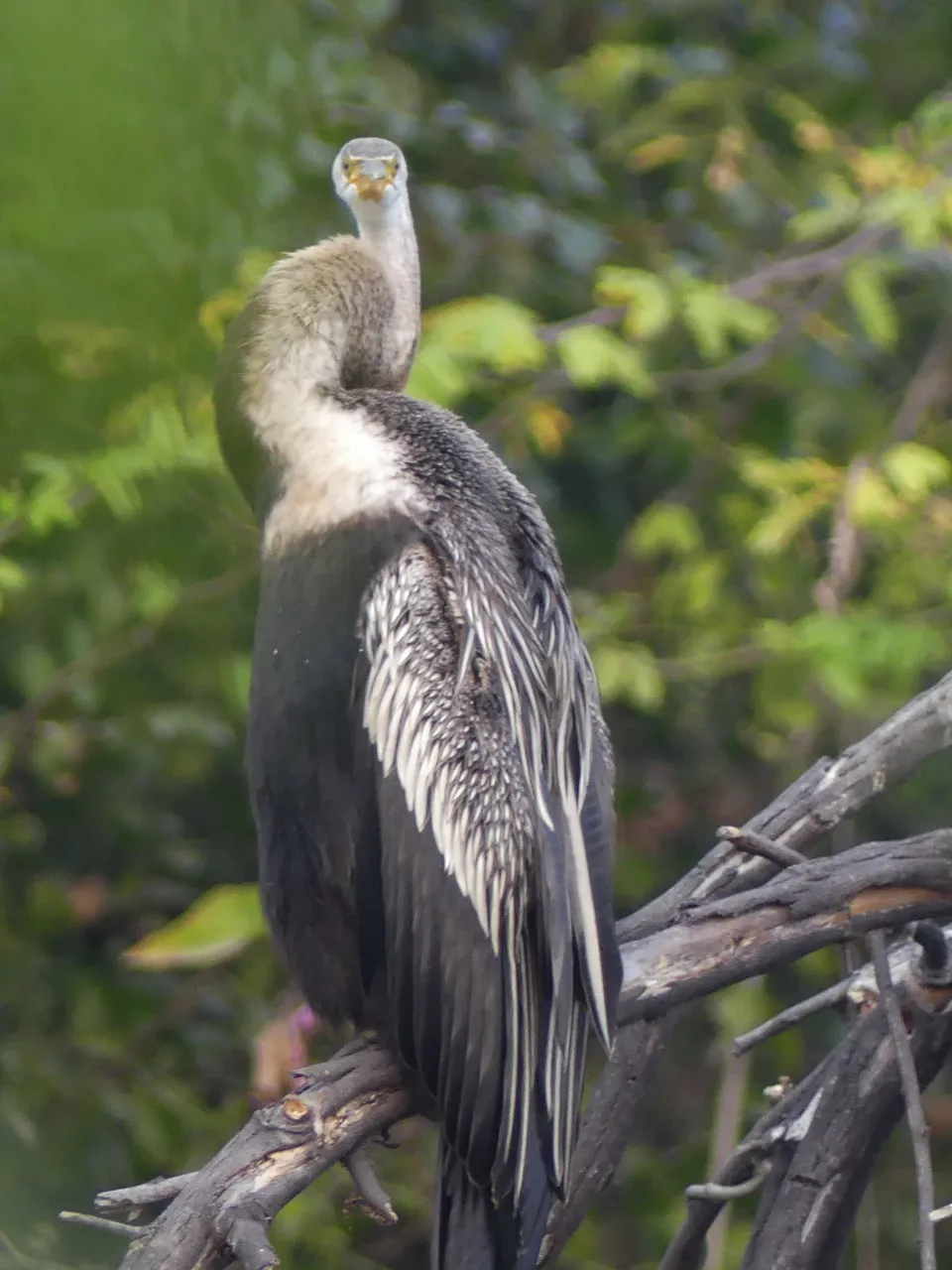
these next photos are taken in our garden during monsoon season. the back section of our property floods during the monsoon. as soon as it does many frogs appear as if out of nowhere. at night there is an amazing concert by the males of the different species of frogs each with all their own unique sounds hopeful of attracting a mate. within a week or so the occasional water birds start to arrive on the hunt for the frogs, insects or whatever else they can find. among these birds is the little comorant (Microcarbo niger)
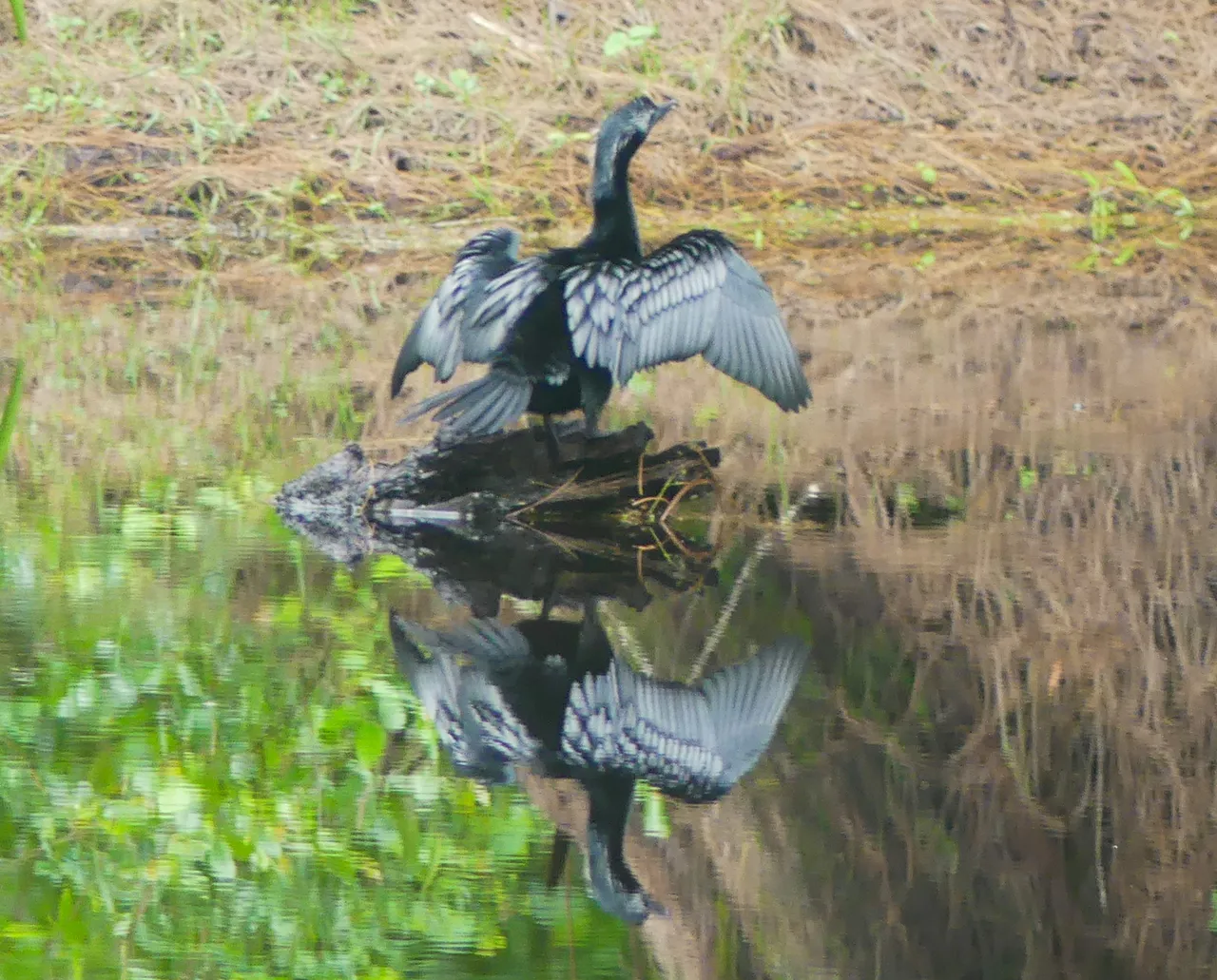
the water level on our property is less than a meter deep and the cormorant dives and swims systematically around the deeper areas of the pool for a hour or so. afterwards they stand with their wings outstretched to dry. during the monsoon their is no sun, so they may stand like this for a long time.
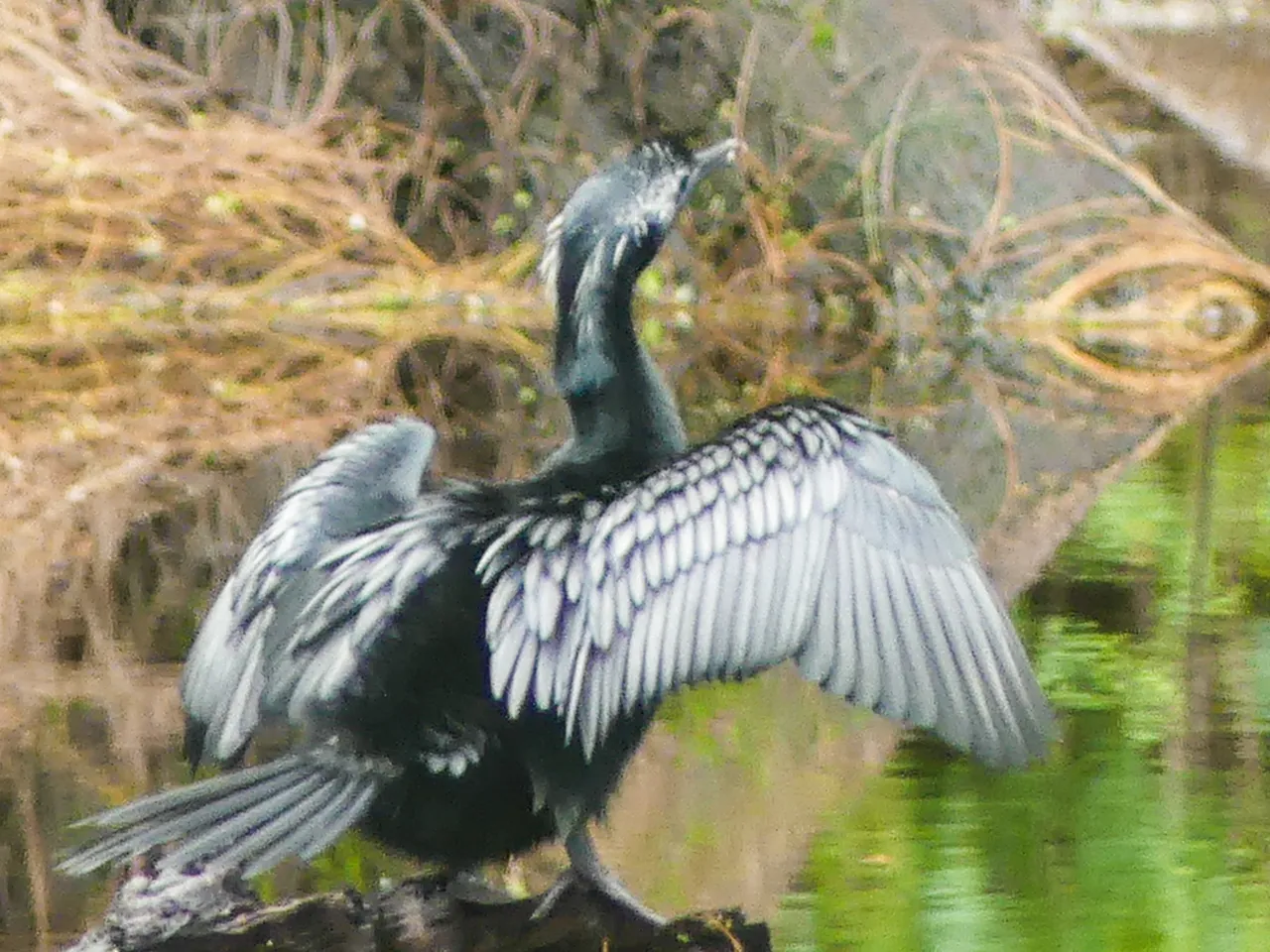
the shallow areas of the pool are patrolled mostly by smaller species of herons, within the second week of the monsoon the nightly concerts from the frogs become considerably subdued, so either the males have found their mate and see no point in singing anymore or the birds have eaten them
